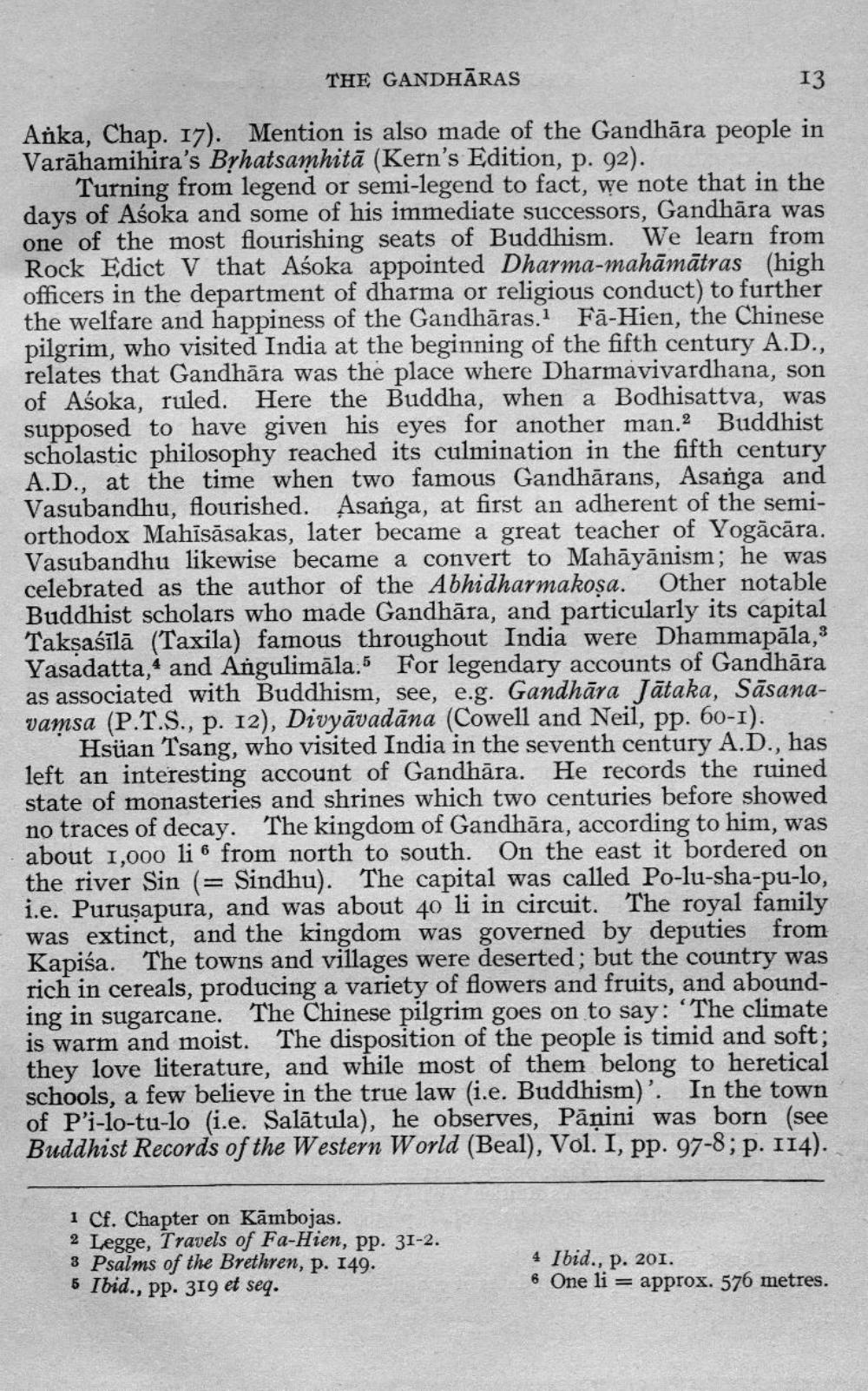________________
THE GANDHĀRAS
13
Anka, Chap. 17). Mention is also made of the Gandhāra people in Varāhamihira's Byhatsamhitā (Kern's Edition, p. 92).
Turning from legend or semi-legend to fact, we note that in the days of Asoka and some of his immediate successors, Gandhāra was one of the most flourishing seats of Buddhism. We learn from Rock Edict V that Asoka appointed Dharma-mahāmātras (high officers in the department of dharma or religious conduct) to further the welfare and happiness of the Gandhāras. Fā-Hien, the Chinese pilgrim, who visited India at the beginning of the fifth century A.D., relates that Gandhāra was the place where Dharmavivardhana, son of Asoka, ruled. Here the Buddha, when a Bodhisattva, was supposed to have given his eyes for another man.2 Buddhist scholastic philosophy reached its culmination in the fifth century A.D., at the time when two famous Gandhārans,
and Vasubandhu, flourished. Asanga, at first an adherent of the semiorthodox Mahīsāsakas, later became a great teacher of Yogācāra. Vasubandhu likewise became a convert to Mahāyānism; he was celebrated as the author of the Abhidharmakosa. Other notable Buddhist scholars who made Gandhāra, and particularly its capital Taksaśīlā (Taxila) famous throughout India were Dhammapāla, Yasadatta,4 and Angulimāla. For legendary accounts of Gandhāra as associated with Buddhism, see, e.g. Gandhāra Jātaka, Sāsanavamsa (P.T.S., p. 12), Divyāvadāna (Cowell and Neil, pp. 60-1).
Hsüan Tsang, who visited India in the seventh century A.D., has left an interesting account of Gandhāra. He records the ruined state of monasteries and shrines which two centuries before showed no traces of decay. The kingdom of Gandhāra, according to him, was about 1,000 li 6 from north to south. On the east it bordered on the river Sin (= Sindhu). The capital was called Po-lu-sha-pu-lo, i.e. Purusapura, and was about 40 li in circuit. The royal family was extinct, and the kingdom was governed by deputies from Kapiśa. The towns and villages were deserted; but the country was rich in cereals, producing a variety of flowers and fruits, and abounding in sugarcane. The Chinese pilgrim goes on to say: "The climate is warm and moist. The disposition of the people is timid and soft; they love literature, and while most of them belong to heretical schools, a few believe in the true law (i.e. Buddhism)'. In the town of P’i-lo-tu-lo (i.e. Salātula), he observes, Pāṇini was born (see Buddhist Records of the Western World (Beal), Vol. I, pp. 97-8; p. 114).
1 Cf. Chapter on Kāmbojas. 2 Legge, Travels of Fa-Hien, pp. 31-2. 3 Psalms of the Brethren, p. 149. 5 Ibid., pp. 319 et seq.
4 Ibid., p. 201. 6 One li = approx. 576 metres.




